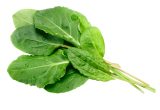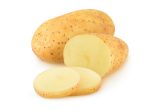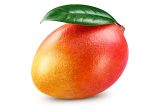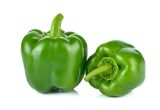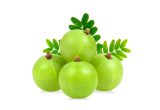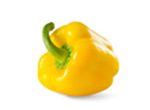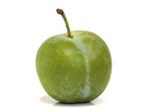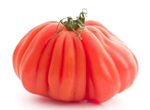Raspberry

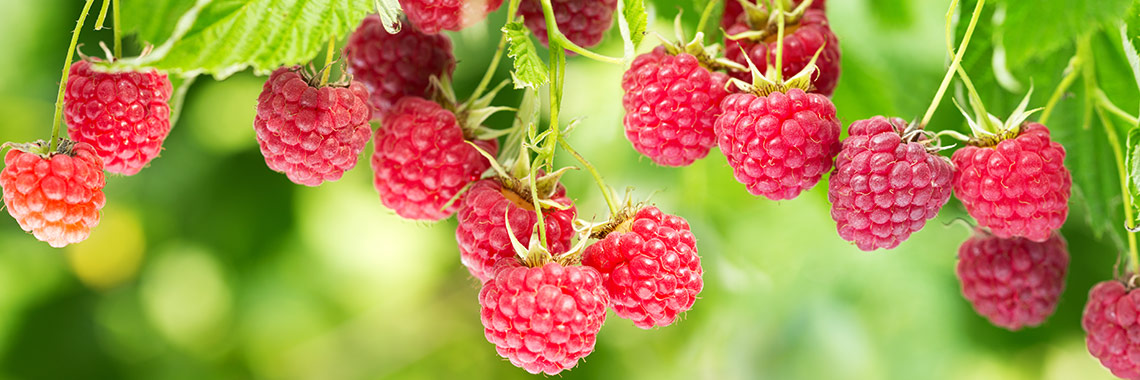
Description
- The raspberry bush (Rubus idaeus) belongs to the Rosaceae family.
PHYSICAL AND ORGANOLEPTIC CHARACTERISTICS
- Fruits of Rubus species are known to be rich in antioxidant components, especially vitamin C, carotenoids and polyphenols (anthocyanins, flavonols, flavan-3-ols, phenolic acids, tannins, etc.) (Kaume, 2012; Rao, 2010; Szajdek, 2008).
- Raspberries range in colour from dark purple to yellow (Rafique, 2016).
- Anthocyanins and carotenoids are considered to be the main pigments involved in raspberry colouration (Rafique, 2016).
- While red raspberries owe their colour to anthocyanins, mainly cyanidin derivatives (Melo, 2000; Snyder, 2012; Szajdek, 2008), yellow varieties owe their colour to carotenoids, mostly lutein, but especially to the absence of anthocyanins (Carvalho, 2013).
- The composition of carotenoids, chlorophyll derivatives, and tocopherols has been studied in raspberries. The results indicate a radical change in the pigment profile during ripening, with a very significant reduction in β-carotene and chlorophyll derivatives, while lutein (xanthophyll) decreases but to a lesser extent. On the other hand, esterified lutein increases. This composition may vary depending on variety and other factors such as environmental conditions (Carvalho, 2013).
- The raspberry is also known to be a fragrant and tart berry. Among the main volatile aroma compounds of raspberry, there are mainly C6 compounds ((Z)-hexenol, hexanal, (E)-2-hexenal, etc.), lactones, (δ-octalactone, δ-decalactone, etc.) and terpene derivatives (geraniol, α-ionone, β-ionone, terpinen-4-ol, etc.) (Hansen, 2016).
- Ketone compounds have also been identified. Among them, 4-(4-hydroxyphenyl)butan-2-one, better known as raspberry ketone, is believed to be the source of the characteristic aroma of this fruit (Koeduka, 2011). This compound is also designated as a synthetic flavouring agent by the US Food and Drug Administration (Kshatriya, 2019).
COMPOSITION CHARACTERISTICS (excluding macronutrients, vitamins and minerals)
- Red raspberry is rich in anthocyanins, whose potential effects on obesity, chemoprevention, inflammation and immune regulation have been demonstrated by several scientific works (Teng, 2017; Wu, 2018).
- Following raspberry consumption, two novel triterpenoids, described to have potential anticancer activities, have been found in ileal fluids, indicating their availability to the colon in vivo (McDougall, 2017).
- Researchers have shown for the first time that raspberry metabolites present in the gastrointestinal fraction appear to protect neuronal and microglial cells against oxidative stress and inflammation. The authors attribute these effects to raspberry polyphenols, which are thought to present a dietary pathway towards delaying or ameliorating neurodegenerative dysfunction (Garcia, 2017).
RAW
The following values are approximate and depend on variety, season, ripeness, cultivation conditions, etc.
The raspberry provides an average of 49.20 calories (kcal) per 100 g, i.e. 206 kJ.
COMPOSITION TABLES
For each nutrient, the tables provide information on the content, the minimum and maximum values as well as the percentage of the Dietary Reference Values (DRVs) for 100 g net of raspberries.
MACRONUTRIENTS
| Constituent (g) | Average content |
Min-Max per 100g |
DRV% |
|---|---|---|---|
| Water | 86,80 | 81,80 - 88,50 | - |
| Fibers | 4,30 | 4,10 - 8,20 | - |
| Carbohydrates | 5,83 | 4,66 - 11,20 | 2,24 |
| Sugars | 5,40 | 3,60 - 9,70 | 6 |
| Lipids | 0,80 | 0,07 - 1,68 | 1,14 |
| Saturated fat | 0,13 | - | 0,65 |
| Protein | 1,19 | 0,92 - 1,70 | 2,38 |
| Constituent (g) | Amount | Min-Max | DRV% |
|---|---|---|---|
| Water | Ciqual 2020 (valeur issue des analyses Ciqual-Aprifel 2018) | - | - |
| Fibers | Ciqual 2020 (valeur issue des analyses Ciqual-Aprifel 2018) | - | - |
| Carbohydrates | Ciqual 2020 | - | Règlement (UE) N°1169/2011 du parlement Européen et du conseil du 25 octobre 2011 |
| Sugars | Ciqual 2020 (valeur issue des analyses Ciqual-Aprifel 2018) | - | Règlement (UE) N°1169/2011 du parlement Européen et du conseil du 25 octobre 2011 |
| Lipids | Ciqual 2020 (valeur issue des analyses Ciqual-Aprifel 2018) | - | Règlement (UE) N°1169/2011 du parlement Européen et du conseil du 25 octobre 2011 |
| Saturated fat | Ciqual 2020 (valeur issue des analyses Ciqual-Aprifel 2018) | - | Règlement (UE) N°1169/2011 du parlement Européen et du conseil du 25 octobre 2011 |
| Protein | Ciqual 2020 (valeur issue des analyses Ciqual-Aprifel 2018) | - | Règlement (UE) N°1169/2011 du parlement Européen et du conseil du 25 octobre 2011 |
Zoom on carbohydrates
- Raspberries contain a quantity of carbohydrates (5.83 g per 100 g) which is well below the average content found in fresh fruit: approximately 11.31 g per 100 g.
- These are mainly fructose (2.80 g per 100 g), glucose (2.10 g per 100 g) and sucrose (0.50 g per 100 g).
Zoom on fibres
- Raspberries are a source of fibre* as they contain more than 3 g of fibre per 100 g of fruit, i.e. 4.30 g per 100 g.
- They contain more than the average content found in fresh fruit (2.77 g per 100 g).
Zoom on proteins
- The protein content of raspberries (1.19 g per 100 g) is higher than the average amount found in fresh fruit: 0.93 g per 100 g.
Zoom on lipids
- The fat content of raspberries (0.80 g per 100 g) is higher than the average amount found in fresh fruit: 0.56 g per 100 g.
- Raspberries are low in fat* as they contain no more than 3 g per 100 g.
MINERALS AND TRACE ELEMENTS
| Constituent | Average content |
Min-Max per 100g |
DRV% |
|---|---|---|---|
| Calcium (mg) | 16 | NC - 32 | 2 |
| Chloride (mg) | < 20 | - | - |
| Copper (mg) | 0,04 | 0,032 - 0,16 | 4 |
| Iron (mg) | 0,40 | NC - 1,08 | 2,86 |
| Iodine (µg) | < 20 | - | - |
| Magnesium (mg) | 20 | 13 - 32 | 5,33 |
| Manganese (mg) | 0,44 | 0,32 - 1,81 | 22 |
| Phosphorus (mg) | 29 | 21 - 37 | 4,14 |
| Potassium (mg) | 170 | 93 - 206 | 8,50 |
| Selenium (µg) | < 20 | - | - |
| Sodium (mg) | < 5 | 0 - NC | - |
| Zinc (mg) | 0,24 | NC - 0,79 | 2,40 |
| Constituent | Amount | Min-Max | DRV% |
|---|---|---|---|
| Calcium (mg) | Ciqual 2020 (valeur issue des analyses Ciqual-Aprifel 2017) | - | Règlement (UE) N°1169/2011 du parlement Européen et du conseil du 25 octobre 2011 |
| Chloride (mg) | Ciqual 2020 (valeur issue des analyses Ciqual-Aprifel 2018) | - | Règlement (UE) N°1169/2011 du parlement Européen et du conseil du 25 octobre 2011 |
| Copper (mg) | Ciqual 2020 (valeur issue des analyses Ciqual-Aprifel 2018) | - | Règlement (UE) N°1169/2011 du parlement Européen et du conseil du 25 octobre 2011 |
| Iron (mg) | Ciqual 2020 (valeur issue des analyses Ciqual-Aprifel 2018) | - | Règlement (UE) N°1169/2011 du parlement Européen et du conseil du 25 octobre 2011 |
| Iodine (µg) | Ciqual 2020 (valeur issue des analyses Ciqual-Aprifel 2018) | - | Règlement (UE) N°1169/2011 du parlement Européen et du conseil du 25 octobre 2011 |
| Magnesium (mg) | Ciqual 2020 (valeur issue des analyses Ciqual-Aprifel 2018) | - | Règlement (UE) N°1169/2011 du parlement Européen et du conseil du 25 octobre 2011 |
| Manganese (mg) | Ciqual 2020 (valeur issue des analyses Ciqual-Aprifel 2018) | - | Règlement (UE) N°1169/2011 du parlement Européen et du conseil du 25 octobre 2011 |
| Phosphorus (mg) | Ciqual 2020 (valeur issue des analyses Ciqual-Aprifel 2018) | - | Règlement (UE) N°1169/2011 du parlement Européen et du conseil du 25 octobre 2011 |
| Potassium (mg) | Ciqual 2020 (valeur issue des analyses Ciqual-Aprifel 2018) | - | Règlement (UE) N°1169/2011 du parlement Européen et du conseil du 25 octobre 2011 |
| Selenium (µg) | Ciqual 2020 (valeur issue des analyses Ciqual-Aprifel 2018) | - | Règlement (UE) N°1169/2011 du parlement Européen et du conseil du 25 octobre 2011 |
| Sodium (mg) | Ciqual 2020 (valeur issue des analyses Ciqual-Aprifel 2018) | - | - |
| Zinc (mg) | Ciqual 2020 (valeur issue des analyses Ciqual-Aprifel 2018) | - | Règlement (UE) N°1169/2011 du parlement Européen et du conseil du 25 octobre 2011 |
Zoom on minerals and trace elements
- Raspberry is a source of manganese as it provides the equivalent of 22% of DRVs, i.e. 0.44 mg per 100 g.
- It also contains a potassium content equivalent to 8.50 % of DRVs, i.e. 170 mg per 100 g.
- The other minerals and trace elements are present in quantities representing less than 6% of DRVs.
VITAMINS
| Constituent | Average content |
Min-Max per 100g |
DRV% |
|---|---|---|---|
| Provitamin A Beta-carotene (µg) | 100 | 0 - NC | - |
| Vitamin A equivalent (µg) | 16,67 | 0 - NC | 2,08 |
| Vitamin B1 (mg) | < 0,015 | 0,012 - 0,063 | - |
| Vitamin B2 (mg) | 0,02 | NC - 0,06 | 1,43 |
| Vitamin B3 (mg) | 0,35 | NC - 0,92 | 2,19 |
| Vitamin B5 (mg) | 0,85 | 0,20 - NC | 14,17 |
| Vitamin B6 (mg) | 0,032 | NC - 0,074 | 2,29 |
| Vitamin B9 (µg) | 38,10 | 7 - 41 | 19,05 |
| Vitamin C (mg) | 18,70 | 11,20 - 37 | 23,38 |
| Vitamin E (mg) | 0,88 | 0,48 - NC | 7,33 |
| Vitamin K1 (µg) | 5,02 | NC - 9,90 | 6,69 |
| Constituent | Amount | Min-Max | DRV% |
|---|---|---|---|
| Provitamin A Beta-carotene (µg) | Ciqual 2020 (valeur issue des analyses Ciqual-Aprifel 2018) | - | - |
| Vitamin A equivalent (µg) | Calcul à partir de la valeur Provitamine A Béta-carotène* | - | Règlement (UE) N°1169/2011 du parlement Européen et du conseil du 25 octobre 2011 |
| Vitamin B1 (mg) | Ciqual 2020 (valeur issue des analyses Ciqual-Aprifel 2018) | - | Règlement (UE) N°1169/2011 du parlement Européen et du conseil du 25 octobre 2011 |
| Vitamin B2 (mg) | Ciqual 2020 (valeur issue des analyses Ciqual-Aprifel 2018) | - | Règlement (UE) N°1169/2011 du parlement Européen et du conseil du 25 octobre 2011 |
| Vitamin B3 (mg) | Ciqual 2020 (valeur issue des analyses Ciqual-Aprifel 2018) | - | Règlement (UE) N°1169/2011 du parlement Européen et du conseil du 25 octobre 2011 |
| Vitamin B5 (mg) | Ciqual 2020 (valeur issue des analyses Ciqual-Aprifel 2018) | - | Règlement (UE) N°1169/2011 du parlement Européen et du conseil du 25 octobre 2011 |
| Vitamin B6 (mg) | Ciqual 2020 (valeur issue des analyses Ciqual-Aprifel 2018) | - | Règlement (UE) N°1169/2011 du parlement Européen et du conseil du 25 octobre 2011 |
| Vitamin B9 (µg) | Ciqual 2020 (valeur issue des analyses Ciqual-Aprifel 2018) | - | Règlement (UE) N°1169/2011 du parlement Européen et du conseil du 25 octobre 2011 |
| Vitamin C (mg) | Ciqual 2020 (valeur issue des analyses Ciqual-Aprifel 2017) | - | Règlement (UE) N°1169/2011 du parlement Européen et du conseil du 25 octobre 2011 |
| Vitamin E (mg) | Ciqual 2020 | - | Règlement (UE) N°1169/2011 du parlement Européen et du conseil du 25 octobre 2011 |
| Vitamin K1 (µg) | Ciqual 2020 (valeur issue des analyses Ciqual-Aprifel 2018) | - | Règlement (UE) N°1169/2011 du parlement Européen et du conseil du 25 octobre 2011 |
Zoom on vitamins
- Raspberry is a source of:
- vitamin C, as it provides the equivalent of 23.38% of DRVs, i.e. 18.70 mg per 100 g;
- vitamin B9, as it provides the equivalent of 19.05 % of DRVs, i.e. 38.10 µg per 100 g.
- As for other vitamins, raspberries also contain a significant amount of vitamin B5, as they represent 14.17% of DRVs, i.e. 0.85 mg per 100 g. Moreover, according to the Ciqual 2020 table, raspberries are the fruit that contains the most vitamin B5.
- The other vitamins are present in quantities representing less than 8% of DRVs.
*Calculation made: Beta Carotene / 6 + retinol
POLYPHENOLS
| Constituent (mg) | Average content |
Min-Max per 100mg |
|---|---|---|
| Flavonoids (mg) | 48,44 | - |
| of which Flavanols (mg) | 17,12 | - |
| of which Anthocyanins (mg) | 31,32 | - |
| Phenolic Acids (mg) | 11,78 | - |
| of which Hydroxybenzoic acids (mg) | 11,78 | - |
| Total polyphenols | 60,22 | - |
| Constituent (mg) | Amount | Min-Max |
|---|---|---|
| Flavonoids | Etude CTIFL-Aprifel 2017-2018 Méthode utilisée : Chromatographie | - |
| of which Flavanols | Etude CTIFL-Aprifel 2017-2018 Méthode utilisée : Chromatographie | - |
| of which Anthocyanins | Etude CTIFL-Aprifel 2017-2018 Méthode utilisée : Chromatographie | - |
| Phenolic Acids | Etude CTIFL-Aprifel 2017-2018 Méthode utilisée : Chromatographie | - |
| of which Hydroxybenzoic acids | Etude CTIFL-Aprifel 2017-2018 Méthode utilisée : Chromatographie | - |
| Total polyphenols | Etude CTIFL-Aprifel 2017-2018 Méthode utilisée : Chromatographie | - |
Zoom on polyphenols
- Polyphenols are substances with an antioxidant effect.
- Raspberries have a notable quantity of polyphenols, 80% of which are flavonoids.
- Among these flavonoids, anthocyanins represent 52% of total polyphenols.
Nutrition and health claims
According to the definitions of nutrition claims as presented in Regulation (EC) No 1924/2006 on nutrition and health claims, and in view of the composition of raspberries, the following claims may be used:
NUTRITION CLAIMS OF RASPBERRIES
- Low in fat (100 g of raspberries contain less than 3 g of fat)
- Source of vitamin C (100 g of raspberries provide the equivalent of more than 15% of DRVs)
- Source of manganese (100 g of raspberries provide the equivalent of more than 15% of DRVs)
- Source of vitamin B9 (100 g of raspberries provide the equivalent of more than 15% of DRVs)
- Source of fibre (100 g of raspberries provide more than 3 g of fibre).
HEALTH CLAIMS (for a consumption of 100 g of raspberries)
Vitamin C
- Vitamin C contributes to:
- normal function of the immune system during and after intense physical exercise,
- normal collagen formation for the normal function of blood vessels,
- normal collagen formation for the normal function of bones,
- normal collagen formation for the normal function of cartilage,
- normal collagen formation for the normal function of gums,
- normal collagen formation for the normal function of skin,
- normal collagen formation for the normal function of teeth,
- normal energy-yielding metabolism,
- normal functioning of the nervous system,
- normal psychological function,
- normal function of the immune system,
- protection of cells from oxidative stress,
- reduction of tiredness and fatigue,
- regeneration of the reduced form of vitamin E.
- Vitamin C increases iron absorption.
Manganese
- Manganese contributes to:
- normal energy-yielding metabolism,
- maintenance of normal bones,
- normal formation of connective tissues,
- protection of cells from oxidative stress.
Folates or vitamin B9
- Folates contribute to:
- maternal tissue growth during pregnancy,
- normal amino acid synthesis,
- normal blood formation,
- normal homocysteine metabolism,
- normal psychological function,
- normal function of the immune system,
- reduction of tiredness and fatigue.
- Folates have a role in the process of cell division.
References
- Agence nationale de sécurité sanitaire de l’alimentation, de l’environnement et du travail. Table de composition nutritionnelle des aliments Ciqual 2020. Consultée le 14/08/2020 depuis le site internet Ciqual https://ciqual.anses.fr/
- Carvalho E, Fraser PD, Martens S. Carotenoids and tocopherols in yellow and red raspberries. Food Chem. 2013 Aug 15;139(1-4):744-52.
- Garcia G, Nanni S, Figueira I, Ivanov I, McDougall GJ, Stewart D, Ferreira RB, Pinto P, Silva RFM, Brites D, Santos CN. Bioaccessible (poly)phenol metabolites from raspberry protect neural cells from oxidative stress and attenuate microglia activation. Food Chemistry. 2017;215:274-283.
- Hansen AMS, Frandsen HL, Fromberg A. Authenticity of raspberry flavor in food products using SPME‐chiral‐GC‐MS. Food Science & Nutrition. 2016;4(3):348-354.
- Kaume L, Howard LR, Devareddy L. The blackberry fruit: a review on its composition and chemistry, metabolism and bioavailability, and health benefits. Journal of agricultural and food chemistry. 2012;60(23):5716-5727
- Koeduka T, Watanabe B, Suzuki S, Hiratake J, Mano J, Yazaki K. Characterization of raspberry ketone/zingerone synthase, catalyzing the alpha, beta-hydrogenation of phenylbutenones in raspberry fruits. Biochem Biophys Res Commun. 2011 Aug 19;412(1):104-8.
- Kshatriya D, Li X, Giunta GM, Yuan B, Zhao D, Simon Je, Wu Q, Bello NT. Phenolic-enriched raspberry fruit extract (Rubus idaeus) resulted in lower weight gain, increased ambulatory activity, and elevated hepatic lipoprotein lipase and heme oxygenase-1 expression in male mice fed a high-fat diet. Nutrition Research. 2019;68:19-33.
- McDougall GJ, Allwood JW, Pereira‐Caro G, Brown EM, Verrall S, Stewart D, Latimer C, McMullan G, Lawther R, O’Connor G, Rowland I, Crozier A, Gill CIR. Novel colon‐available triterpenoids identified in raspberry fruits exhibit antigenotoxic activities in vitro. Molecular Nutrition Food Research. 2017;61(2).
- Melo MJ, Moncada MC, & Pina F. On the red colour of raspberry (Rubus idaeus). Tetrahedron Letters. 2000;41(12):1987-1991.
- Mikulic-Petkovsek M, Schmitzer V, Slatnar A, Stampar F, Veberic R. Composition of sugars, organic acids, and total phenolics in 25 wild or cultivated berry species. J Food Sci. 2012 Oct;77(10):C1064-70.
- Neveu V, Perez-Jiménez J, Vos F, Crespy V, du Chaffaut L, Mennen L, Knox C, Eisner R, Cruz J, Wishart D, Scalbert A. (2010) Phenol-Explorer: an online comprehensive database on polyphenol contents in foods. Database, doi: 10.1093/database/bap024. Full text (free access)
- Rafique MZ, Carvalho E, Stracke R, Palmieri L, Herrera L, Feller A, Malony M, Martens S. Nonsense Mutation Inside Anthocyanidin Synthase Gene Controls Pigmentation in Yellow Raspberry ( Rubus idaeus L.). De face. Plant Sci. 2016;7:1892.
- Rao AV, Snyder DM. Raspberries and human health: a review. Journal of Agricultural and Food Chemistry. 2010;58(7):3871-3883.
- Règlement (CE) N° 1924/2006 du Parlement européen et du Conseil du 20 décembre 2006 concernant les allégations nutritionnelles et de santé portant sur les denrées alimentaires.
- Règlement (UE) N°432/2012 de la Commission du 16 mai 2012 établissant une liste des allégations de santé autorisées portant sur les denrées alimentaires, autres que celles faisant référence à la réduction du risque de maladie ainsi qu’au développement et à la santé infantiles.
- Règlement (UE) n°1169/2011 du Parlement européen et du Conseil du 25 octobre 2011 concernant l’information des consommateurs sur les denrées alimentaires, modifiant les règlements (CE) n°1924/2006 et (CE) n°1925/2006 du Parlement européen et de Conseil et abrogeant la directive 87/250/CEE de la Commission, la directive 90/496/CEE du Conseil, la directive 1999/10/CE de la Commission, la directive 200/13/CE du Parlement européen et du Conseil, les directives 2002/67/CE et 2008/5/CE de la Commission et le règlement (CE) n°608/2004 de la Commission.
- Snyder SM1, Low RM, Stocks JC, Eggett DL, Parker TL. Juice, pulp and seeds fractionated from dry climate primocane raspberry cultivars (Rubus idaeus) have significantly different antioxidant capacity, anthocyanin content and color. Plant Foods Hum Nutr. 2012 Dec;67(4):358-64.
- Szajdek A & Borowska E. J. Bioactive compounds and health-promoting properties of berry fruits: a review. Plant foods for human nutrition. 2008;63(4):147-156.
- Teng H, Fang T, Lin Q, Song H, Liu B, Chen L. Red raspberry and its anthocyanins: Bioactivity beyond antioxidant capacity. Trends in Food Science & Technology. 2017;66:153-165.
- Wu T, Yang L, Guo X, Zhang M, Liu R, & Sui W. Raspberry anthocyanin consumption prevents diet-induced obesity by alleviating oxidative stress and modulating hepatic lipid metabolism. Food & Function. 2018;9(4):2112–2120.





